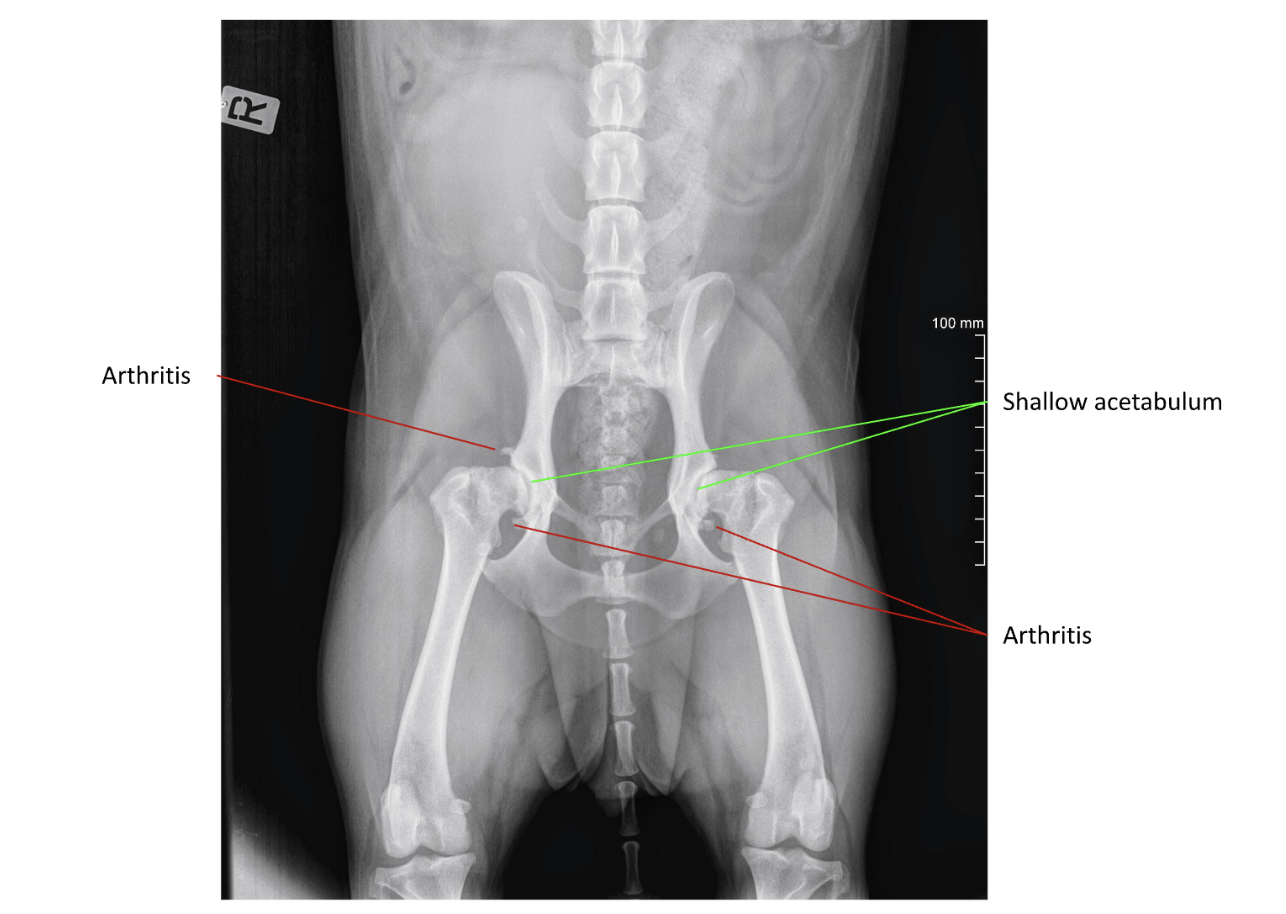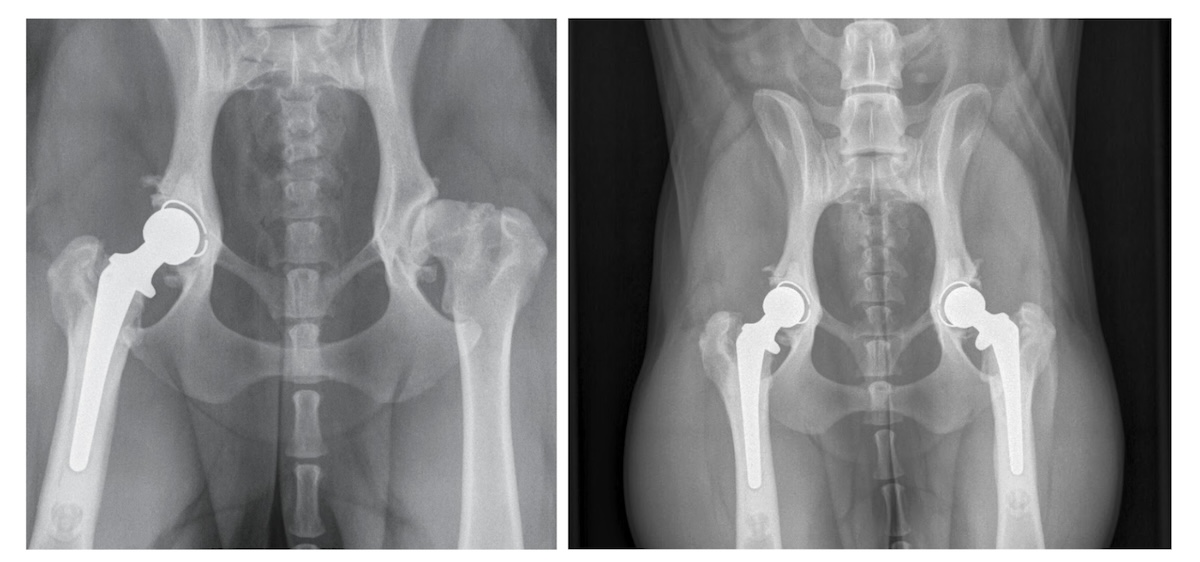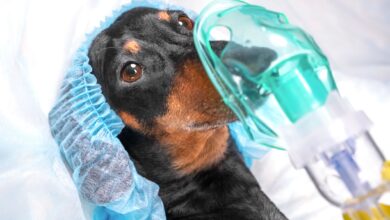Dr. Karyn on Dog Hip Replacement Surgery – Dogster

[ad_1]
Hi, I’m Dr. Karyn. Read my introduction to learn more about me and my five funny dogs, Poppy, Bailey, Kodah, Ned, and Fred.
People are sometimes surprised that as a vet, I have pet insurance, but although I can look after many of my pets’ health needs, there are plenty of conditions that I can’t treat, and of course, they’re the expensive ones. And in 2017, when we realized that our yellow Labrador, Bailey, was going to need hip replacement surgery, I was incredibly relieved that we had opted for top-level cover. At £6000 (US $7600) per hip, there is no way we would have been able to afford this surgery, but all we had to pay was an excess of around £200 (US $250).
But it wasn’t just the price of surgery that we needed to consider. Although I knew just about everything I needed to know about this type of surgery, it was still difficult to make the decision to go ahead. In the end, I am so glad we did, and I think Bailey is even more grateful.
Here is her story.


Bailey Before
My husband, Reece, already had Bailey before he and I got together. He had adopted her as a companion for his black Labrador, Poppy. As you may be aware, Labradors are a breed that is predisposed to hip dysplasia, a condition where the ball-and-socket joint of the hips is not formed correctly, leading to abnormal mobility in the joint, inflammation, and arthritis. Despite both parents having good hip scores, we knew from a young age that Bailey’s hips were going to be trouble. Although she was active, happy, and loved bounding up and down the sand dunes, she also walked with the characteristic ‘hip dysplasia sashay’.
In late 2017, when she was four years old, we decided to bite the bullet and x-ray her hips, and we were not surprised to see that her hips were not terrific. The head of her femur (the ‘ball’) was slightly flattened, and the acetabulum (the ‘socket’) was far too wide and shallow to properly contain and stabilize the joint, and there was already significant arthritic change around the joint.


So we knew that the joints were unstable, and the arthritis told us that her hips would be painful, but at the time, she still seemed very happy and active. In the long term, she would benefit from hip replacement surgery, but when was the right time? Do we wait until she is showing more obvious signs of mobility problems, or do we intervene now, before the problem gets any worse?
Big Decisions
It might seem like an obvious choice – do the surgery before she gets worse, right? But we were also mindful of how big a surgery this was.
- What if there are complications?
- What if she ends up in more pain?
In the end, the decision was made when Bailey cried out in pain during a run in the woods – we couldn’t let her get any worse. But we were still nervous.
Her right hip was the worst, so that was the one the orthopedic specialist would operate on first. Once she had fully recovered, we would look at doing the left hip in the following 12 months. So, in February 2018, we took our beautiful Bailey up to the Veterinary Specialist, where she would spend the next three days.


Bailey’s Big Op
You can imagine our relief when we got the call that the surgery went perfectly, and after two days recovering, we got to bring her home. The first 24 hours were the worst; she wasn’t her usual bouncy self, and it was obvious that, despite the medication, that she was still in some pain. By the next day, things were very different, and convincing her to take it easy became our biggest challenge! We had set up a cozy crate to keep her from getting carried away when we weren’t able to watch her, but whenever our backs were turned, she was trying to get up on the sofa!
We had strict guidelines telling us how much we could exercise Bailey, and it was clear from our second week that it was going to be tough to hold her back! It became obvious that by going ahead with surgery sooner rather than later, Bailey hadn’t been lame or lost muscle mass, meaning that her recovery was much smoother than we had expected.
By the fourth week, she was desperate to be let off the leash, and week six she was starting to run. Three months after surgery, she was like a brand new dog; better than she’d ever been. We didn’t realize how much her dodgy hips had held her back until the results were in front of us – and this was only after one hip!


Boundless Energy
We had very little trepidation about her second surgery, and three months after her left hip had been replaced with a shiny new ball-and-socket joint, she was leaping up on her back legs, something she had never done before. Suddenly, she was the fastest of our dogs, and the one that never wanted to come home from the beach.
Now it’s five years after her second surgery, and I am so glad we went ahead when we did. Bailey’s slowing down now, showing her age, with arthritis in her elbows and knees. But one place she doesn’t have arthritis is her hips.
I hate to think what her life would have been like if we weren’t able to get her the surgery she needed, but I know that her quality of life would have been so much worse. I am so grateful for the skill and expertise of the surgeon and nurses at the veterinary specialist, and I am even more grateful that my husband made sure that Bailey was insured from the moment he brought her home.


Be Prepared For The Worst
We all want the best for our pets, and no matter how much research we do and how much care we take, unless we are extraordinarily lucky, our pets will, at some point, need veterinary treatment. The reality is that without insurance, Bailey would not have her shiny titanium hips, and her life would have been very different, which is why I recommend pet insurance to every owner. It’s something you hope you’ll never need, but when you do, you’ll be grateful you can focus on your beloved pet, and leave the money worries to the insurance company.


[ad_2]
Source link






